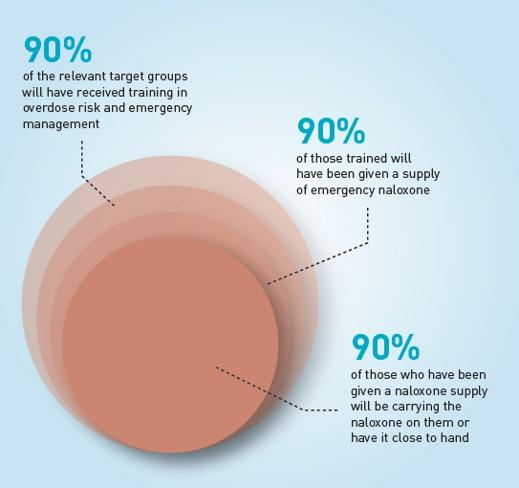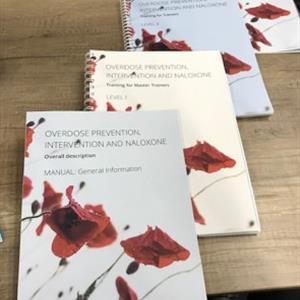WHO-UNODC “Stop Overdose Safely (S-O-S)” initiative
Project background
Overdose is the leading cause of avoidable death among people who inject drugs. Globally more than 100 000 people die from opioid overdoses each year. A medication known as naloxone exists that can prevent death among people who have overdosed. First responders such as people who use opioids, their peers and family members, health professionals, police and fire personnel using naloxone effectively following an overdose is at the project’s core.
In response to the 2016 General Assembly Special Session on the World Drug Problem, and the Commission on Narcotic Drugs resolution 55/7 on "Promoting measures to prevent drug overdose, in particular opioid overdose," as well as based on the 2014 Guidelines on Community Management of Opioid Overdose the “Stop Overdose Safely (S-O-S)” initiative was launched.
The prevention of opioid overdose, through provision of naloxone access and of evidence-based drug dependence treatment, in particular pharmacological treatment with long-acting opioid agonists, has been one of the major areas of work of the UNODC-WHO Programme on Drug Dependence Treatment and Care.
WHO Recommendations
1. People likely to witness an opioid overdose should have access to naloxone and be instructed in its administration to enable them to use it for the emergency management of suspected opioid overdose.
2. Naloxone is effective when delivered by intravenous, intramuscular, subcutaneous and intranasal routes of administration. Persons using naloxone should select a route of administration based on the formulation available, their skills in administration, the setting and local context.
3. In suspected opioid overdose, first responders should focus on airway management, assisting ventilation and administering naloxone.
4. After successful resuscitation following the administration of naloxone, the level of consciousness and breathing of the affected person should be closely observed until full recovery has been achieved.

S-O-S 90-90-90 Target

WHO-UNODC S-O-S Multisite Study implementation study on community management of opioid overdose (2016-2020)
about 16 000 people
were trained in identification and management of opioid overdose
(Using WHO/UNODC SOS package for cascade training)

about 40 000 ampules of naloxone
were distributed in project countries
(SOS Take-Home-Naloxone-Kits)

The SOS Implementation study on community management of opioid overdose is going on in Kazakhstan, Kyrgyzstan, Tajikistan, and Ukraine. It seeks to improve the ability of communities to manage opioid overdose and to determine whether the methodology used is effective.
Through the project, lessons will be learned about facilitation of such interventions and barriers to implementation. The project will pave the way to national scale-up of the programmes and will play a role in strengthening global efforts to reduce opioid-related deaths and drug-related mortality.
Assessment Phase (2016)
Governmental support
Key-stakeholders meetings
Study protocol development
Identification of national counterparts
Preparatory Phase (2017 - 2019)
Situational analysis/site visits
Finalization of study protocol
Ethics approval(s) for the study
Development of training materials
Trainings of national partners
Implementation Phase (2017 - 2019)
OOD training and dissemination of naloxone
Coordination of data collection
Monitoring and evaluation
Evaluation Phase (2020)
OOD training and dissemination of naloxone
Coordination of data collection
Monitoring and evaluation
Related health topic
Related activity
